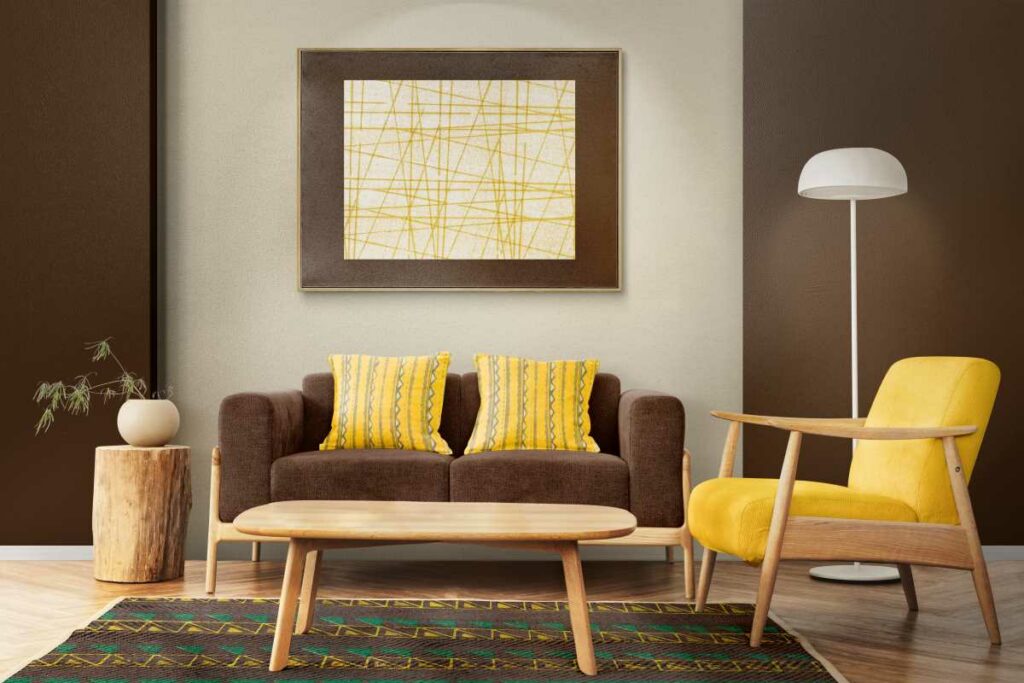To decorate a living room with simple things, consider the following ideas:
- Use a monochrome palette to create a chic and minimalist look.
- Add greenery or potted plants to enliven the space and bring in natural elements.
- Rearrange existing furniture to refresh the room without spending money.
- Incorporate items that reflect your hobbies, interests, or travels.
- Use color repetition to create a cohesive look.
- Shop your own home and swap decor items from other rooms to give your living room a new feel.
- Match decor with your walls for a minimalist and balanced look.
- Add colorful accents or statement pieces to create visual interest.
- Incorporate architectural features or custom shelves for a personalized touch.
- Use natural grasses or dried stems in a vase for a simple and affordable arrangement.
What Are Some Monochrome Palettes That Can Be Used In A Living Room?
There are several monochrome palettes that can be used in a living room, including:
- Leafy jungle green
- Black and white
- Dark green
- Any single color of your choice
When choosing a monochrome color scheme, it is important to consider the shades and tones of the color to create depth and dimension in the room.
What Types Of Plants Work Well In A Living Room Setting?
There are many types of plants that work well in a living room setting.
Some popular options include:
- Bromeliads
- Bamboo Palm
- Bird of Paradise
- Money Tree
- ZZ Plant
- Peace Lily
- Spider Plant
- Rubber Plant
- Fiddle Leaf Fig
- Pothos
- Snake Plant
- Monstera
- Philodendron
- English Ivy
- Chinese Evergreen
How Can Color Repetition Be Used Effectively In Decorating A Living Room?
Color repetition in a living room may provide rhythm and cohesiveness, guide the eye from element to element, and foster a sense of harmony.
This may be done by repeating colors both on and off the wall and transporting a dominant hue from one area to another, such as from one level to another.
Repetition of design components like lines, colors, and patterns may be used to create rhythm, which is the simplest approach to do so.
A living room may be efficiently decorated using key interior design principles including rhythm, repetition, and contrast.
What Are Some Examples Of Architectural Features That Can Be Incorporated Into A Living Room?
Some examples of architectural features that can be incorporated into a living room include:
- Painted wood trim and decorative ceiling beams
- Built-in bookshelves or cabinets
- A fireplace mantel and surround
- Large windows or skylights
- Unique lighting fixtures
- A statement wall or accent wall
How Can Statement Pieces Be Incorporated Into A Living Room Without Overwhelming The Space?
Incorporating statement pieces into a living room can be a great way to add personality and style to the space.
However, it’s important to do so in a way that doesn’t overwhelm the room.
Here are some tips to help:
- Choose one or two statement pieces: Instead of trying to incorporate multiple statement pieces, choose one or two that really stand out and build the rest of the room around them.
- Use statement pieces as focal points: Place statement pieces in areas of the room that naturally draw the eye, such as above a fireplace or on a prominent wall.
- Balance statement pieces with neutral pieces: To prevent the statement pieces from overwhelming the space, balance them with neutral pieces that complement them without competing for attention.
- Consider scale: Make sure the statement pieces are appropriately sized for the room. A large statement piece in a small room can make the space feel cramped, while a small statement piece in a large room can get lost.
- Use statement pieces to tie the room together: Choose statement pieces that complement the existing decor in the room, whether it’s a bold rug that picks up the colors in the sofa or a unique piece of art that ties together the color scheme.
By following these tips, you can incorporate statement pieces into your living room in a way that adds interest and personality without overwhelming the space.







